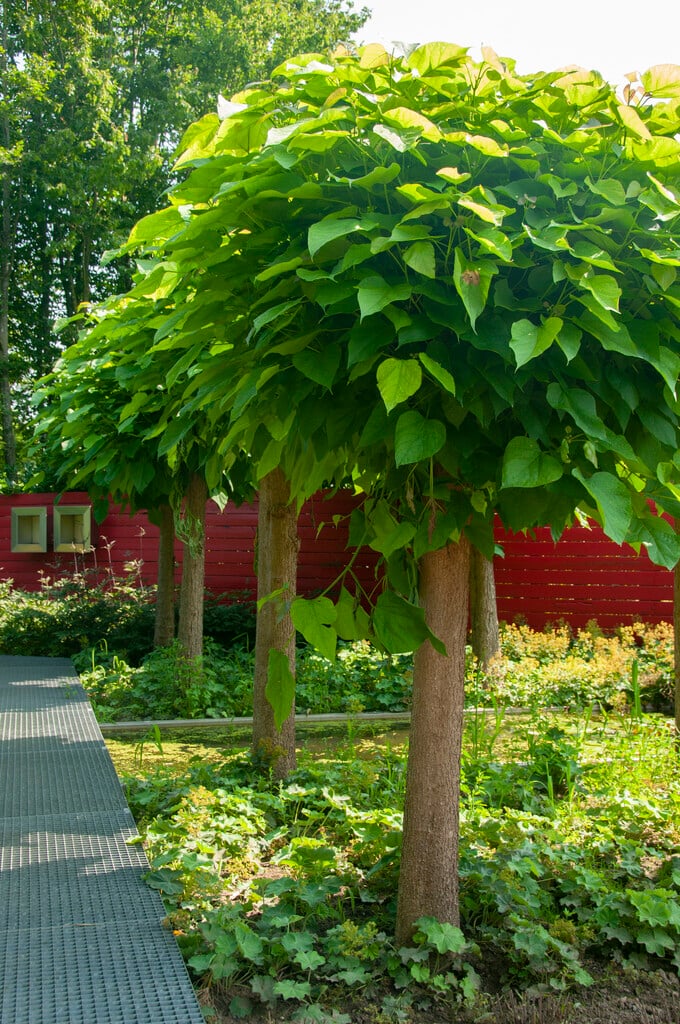Catalpa bignonioides 'Nana'
Indian bean tree 'Nana'
A deciduous, shrubby dwarf cultivar which grows to about 1.8m in height, but is most often grafted on to a tall-stemmed rootstock of Catalpa bignonioides. The leaves are large, mid green and heart-shaped; this cultivar rarely flowers
Size
Ultimate height
1.5–2.5 metresTime to ultimate height
5–10 yearsUltimate spread
1.5–2.5 metresGrowing conditions
Moisture
Moist but well–drained, Well–drainedpH
Acid, Alkaline, NeutralColour & scent
| Stem | Flower | Foliage | Fruit | |
| Spring | Green | |||
|---|---|---|---|---|
| Summer | Green | |||
| Autumn | Green | |||
| Winter |
Position
- Full sun
Aspect
South–facing or West–facing
Exposure
Sheltered Hardiness
H6Botanical details
- Family
- Bignoniaceae
- Native to GB / Ireland
- No
- Foliage
- Deciduous
- Habit
- Bushy, Spreading branched
- Genus
Catalpa are deciduous trees of spreading habit, with handsome, large leaves and erect panicles of showy, bell-shaped flowers in late summer, followed by persistent, slender bean-like seed capsules
- Name status
Accepted
How to grow
Cultivation
Grow in a moist but well-drained, fertile soil in a sunny position; will tolerate a heavy clay soil. Shelter from strong winds as these may shred the large leaves. Protect from late spring frosts when young
Propagation
Propagate by softwood cuttings in late spring or grafting in winter
Suggested planting locations and garden types
- Cottage and informal garden
- Architectural
- City and courtyard gardens
- Wildlife gardens
- Low Maintenance
Pruning
Pests
Generally pest-free
Diseases
May be susceptible to verticillium wilt and rarely, honey fungus
Get involved
The Royal Horticultural Society is the UK’s leading gardening charity. We aim to enrich everyone’s life through plants, and make the UK a greener and more beautiful place.

